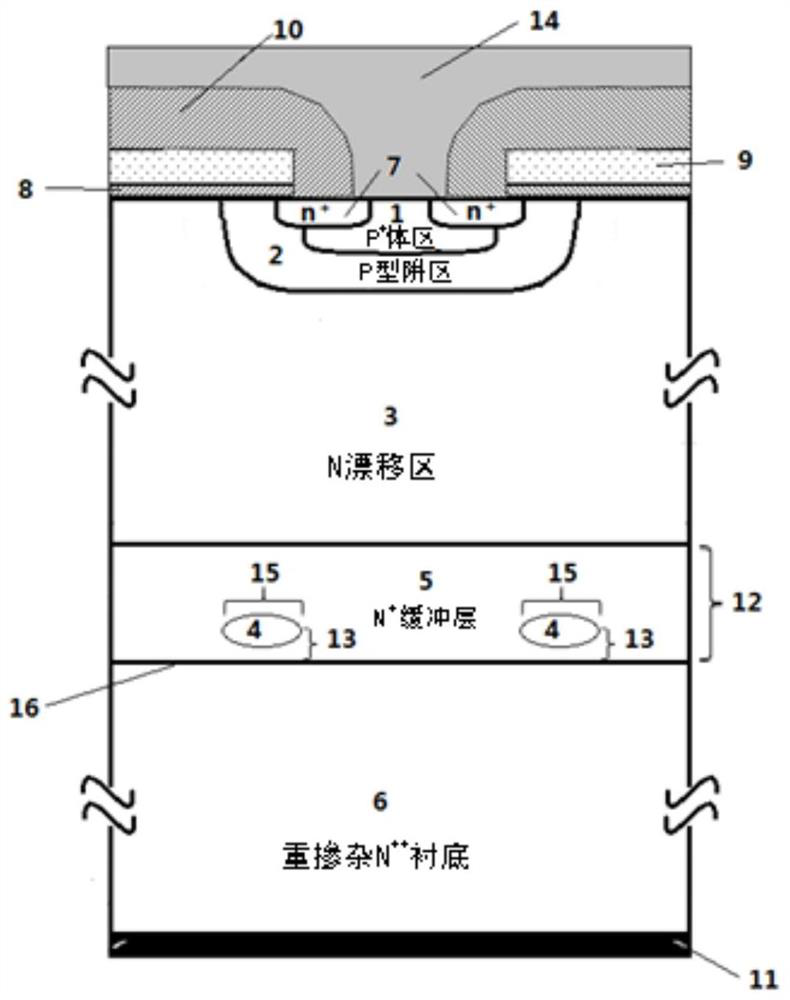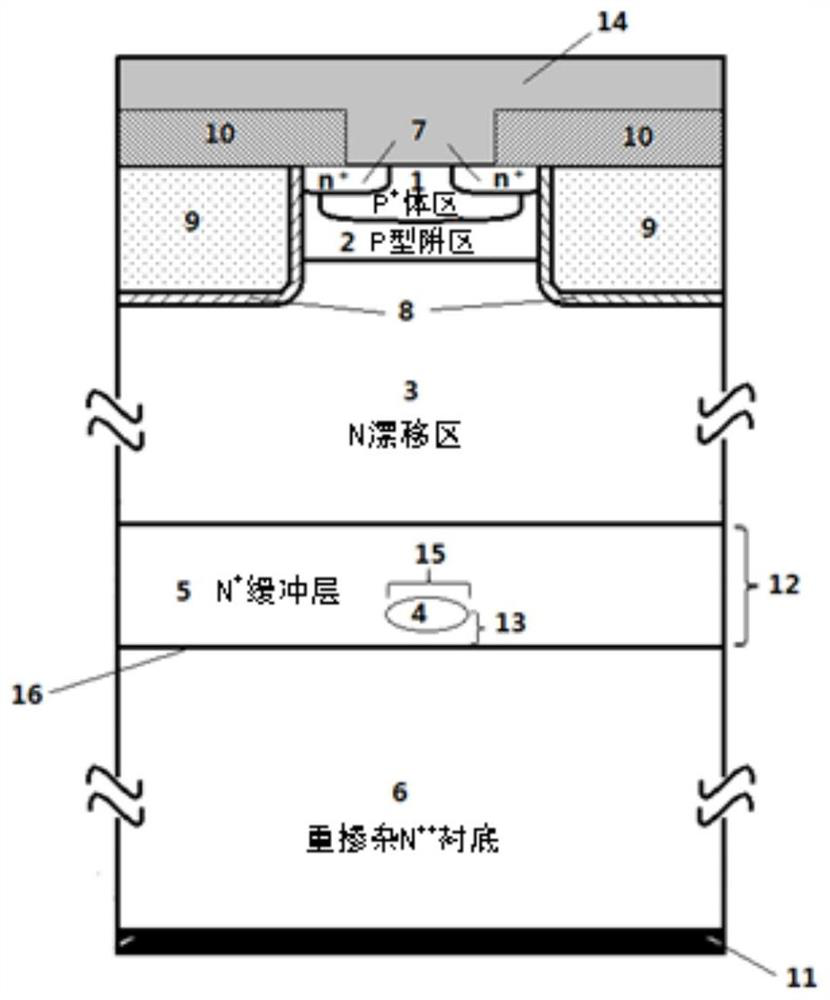A radiation-resistant mosfet structure with a p-type island buffer layer structure
A buffer layer, anti-radiation technology, applied in semiconductor devices, electrical components, circuits, etc., can solve the problems of increasing the on-resistance of power MOSFETs and being too high.
- Summary
- Abstract
- Description
- Claims
- Application Information
AI Technical Summary
Problems solved by technology
Method used
Image
Examples
Embodiment 1
[0014] This embodiment is a planar gate MOSFET with a P-type island buffer layer structure. figure 1 . In its structure, except for the P-type island buffer layer that embodies the characteristics of the present invention, the others are the same as the common planar gate MOSFET structure: N ++ The substrate (6) has a thickness of 100 microns and is doped with arsenic at a concentration of 2×10 19 cm -3 ; The thickness of buffer layer (5) is 15 microns, doping concentration 5 * 10 16 cm -3 ; The thickness of the drift region (3) is 15 microns, and the doping concentration is 1×10 15 cm -3 ; P-type well region (2) is generated by diffusion, with a junction depth of 2.5 microns; P + Body region(1) junction depth 1.2 µm, N + The junction depth of the source region (7) is 0.5 micron; the channel length determined by the diffusion difference between the well region and the source region is about 1.8 micron. The repetition period of the cells on the silicon wafer is 12 micro...
Embodiment 2
[0016] This embodiment is a trench gate MOSFET with a P-type island buffer layer structure. The cell structure is square. For the cross-sectional structure of the device, refer to the attached figure 2 . In its structure, except for the P-type island buffer layer that embodies the characteristics of the present invention, the others are the same as the common planar gate MOSFET structure: N ++ The substrate (6) has a thickness of 100 microns and is doped with arsenic at a concentration of 2×10 19 cm -3 ; The thickness of buffer layer (5) is 15 microns, doping concentration 5 * 10 16 cm -3 ; The thickness of the drift region (3) is 15 microns, and the doping concentration is 1×10 15 cm -3 ; P-type well region (2) is generated by diffusion, with a junction depth of 2.5 microns; P + Body region(1) junction depth 1.2 µm, N + The junction depth of the source region 7 is 0.5 microns; the channel length determined by the diffusion difference between the well region and the so...
PUM
| Property | Measurement | Unit |
|---|---|---|
| thickness | aaaaa | aaaaa |
| thickness | aaaaa | aaaaa |
Abstract
Description
Claims
Application Information
 Login to View More
Login to View More - R&D
- Intellectual Property
- Life Sciences
- Materials
- Tech Scout
- Unparalleled Data Quality
- Higher Quality Content
- 60% Fewer Hallucinations
Browse by: Latest US Patents, China's latest patents, Technical Efficacy Thesaurus, Application Domain, Technology Topic, Popular Technical Reports.
© 2025 PatSnap. All rights reserved.Legal|Privacy policy|Modern Slavery Act Transparency Statement|Sitemap|About US| Contact US: help@patsnap.com


